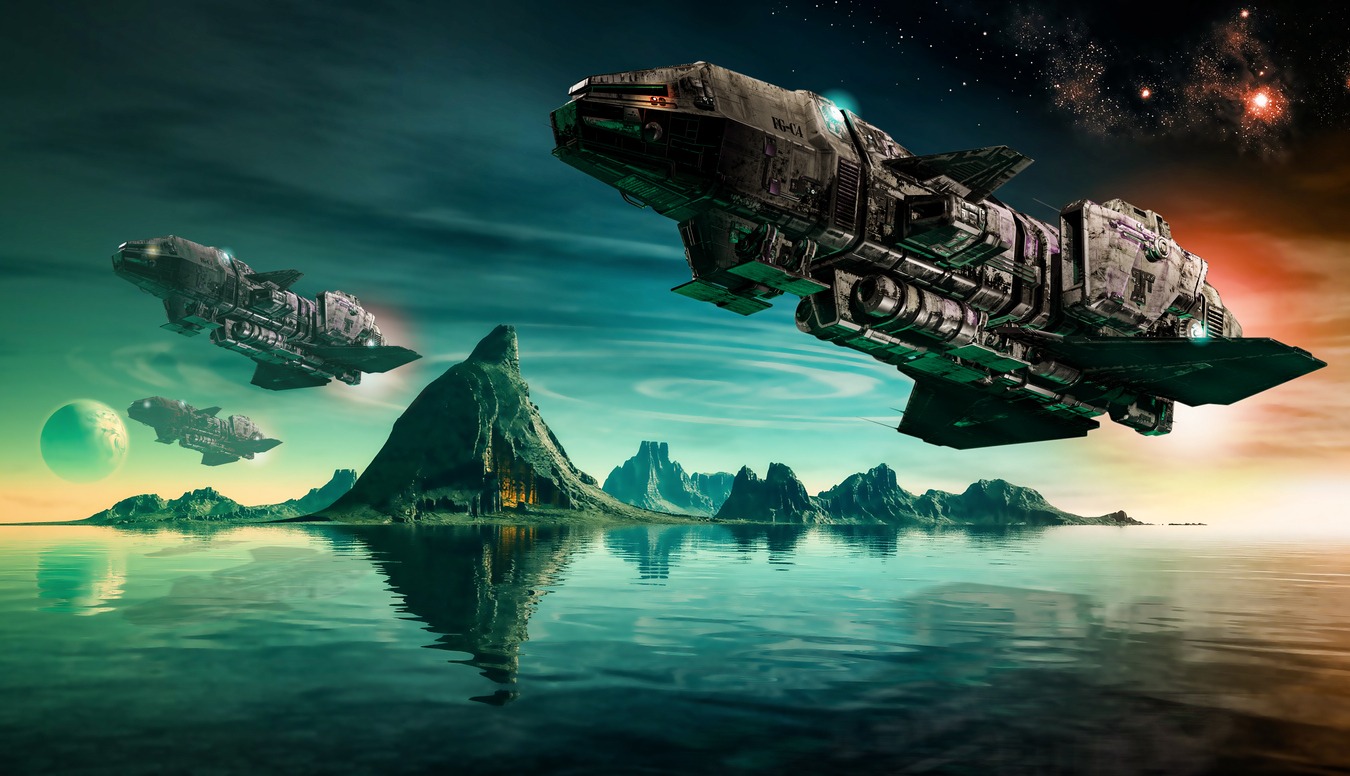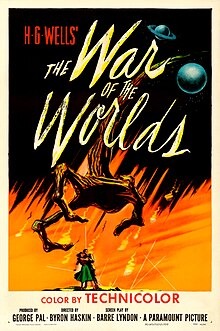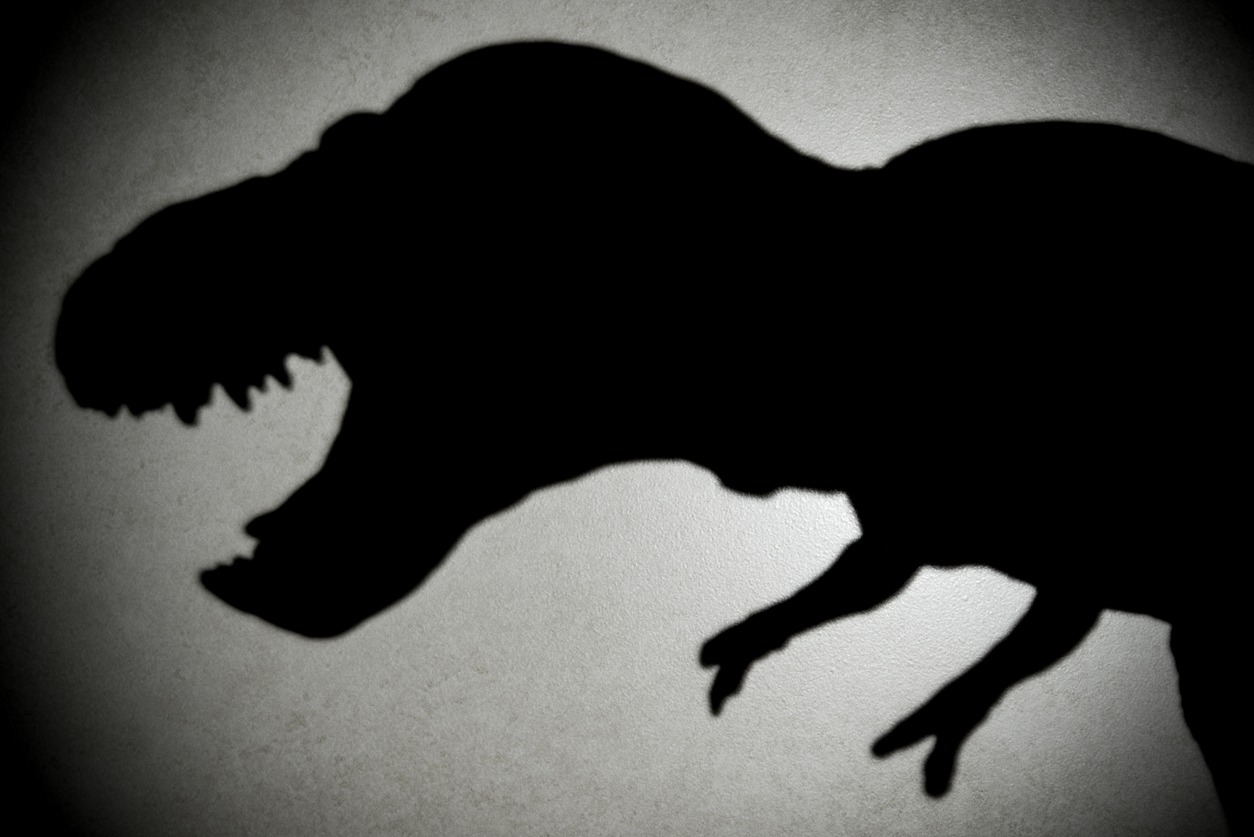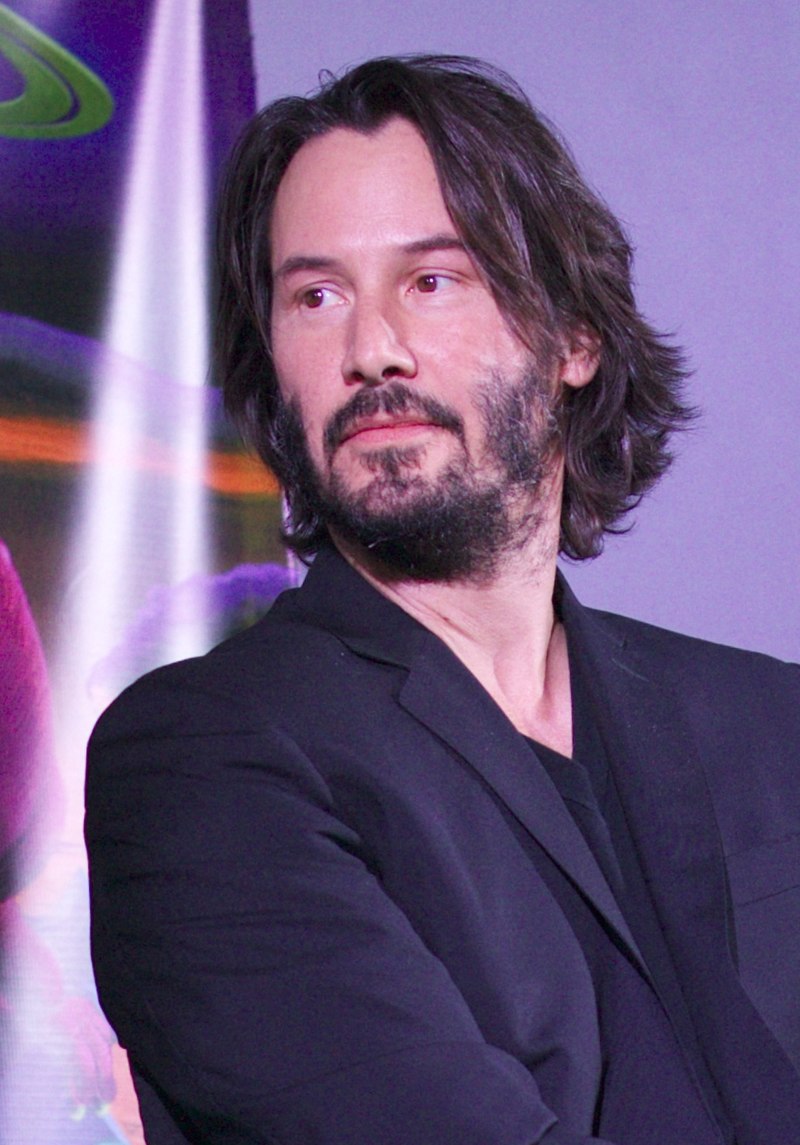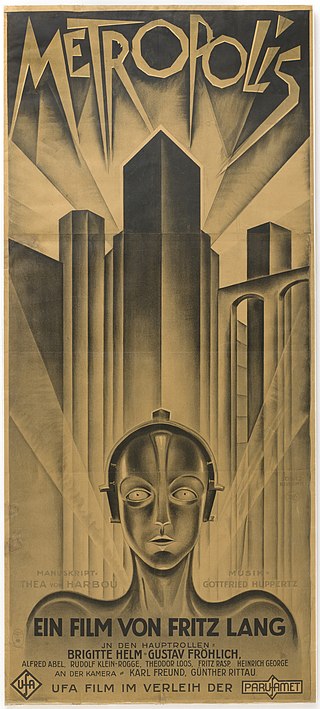When it comes to iconic science fiction novels and their film adaptations, it’s like taking a journey from the pages of a book to the big screen. One major challenge is condensing the rich and complex worlds that authors create into a two-hour visual experience. These novels often have intricate plots, deep character development, and detailed settings, which can be tough to capture fully in a limited runtime. However, successful adaptations manage to distill the essence of the story and its core themes, keeping fans and newcomers engaged.
Adapting imaginative book worlds into compelling visuals is tricky. Successful adaptations use smart storytelling, impressive effects, and talented actors to stay true to the source while preserving its essence. Some disappoint, but others become classics, showcasing how literature and film transport us to sci-fi wonders.
In this article, we’ll dive into 12 famous sci-fi film adaptations, discussing the challenges filmmakers face in bringing beloved novels to the screen and celebrating the remarkable successes that have mesmerized audiences.
1. Dune (2021)
“Dune,” written by Frank Herbert in 1965, has seen two notable movie adaptations. The 1984 version, simply titled “Dune,” while not considered amazing, offered an enjoyable and well-cast experience. It took on the challenge of bringing the intricate desert planet Arrakis and the story of Paul Atreides to life, where the valuable “spice” melange plays a central role. The film’s success lay in its bold attempt to capture the essence of the novel, despite its shortcomings.
In 2021, Denis Villeneuve’s adaptation of “Dune” emerged as a significant success, finally doing justice to the immense novel. This version follows a young man’s perilous journey to save his people from extinction on a dangerous planet. The earlier 1984 adaptation by David Lynch fell short of capturing the novel’s grand scale and received mixed reviews. However, “Dune” as a story has left an indelible mark on the world of cinema, influencing numerous science fiction classics, including George Lucas’s “Star Wars” series.
2. Blade Runner (1982)
“Blade Runner,” released in 1982 and based on Philip K. Dick’s novel entitled “Do Androids Dream of Electric Sheep?” (1968), is a celebrated sci-fi neo-noir classic. The film’s narrative revolves around Rick Deckard, a bounty hunter tasked with eliminating rogue androids who have integrated into human society. While it offers thrilling action, it delves deeper into themes of morality and human identity.
Creating a film adaptation of “Do Androids Dream of Electric Sheep?” was a demanding task. In the movie, they had to show androids that looked just like real people, and they had to tackle some tricky moral questions. Ridley Scott, the director, did a great job making it all come to life while staying true to the essence of the original story and making us think deeply about the story.
3. 2001: A Space Odyssey (1968)
“2001: A Space Odyssey,” directed by Stanley Kubrick in 1968, is a classic science fiction film that originated from Arthur C. Clarke’s short story “The Sentinel.” Clarke initially wrote the story in 1948, centered around an alien artifact on the moon. However, it failed to gain recognition in a BBC competition. Kubrick and Clarke joined forces in 1964 to create a new science-fiction film inspired by “The Sentinel” and other short stories by Clarke. Their original plan was to co-write a novel and then adapt it into a screenplay. Surprisingly, both the novel and the screenplay were developed simultaneously, with the novel published under Clarke’s name shortly before the movie’s release in 1968.
This unique approach allowed the book and the film to coexist, offering audiences two distinct yet related experiences. While there were minor plot differences, Kubrick’s adaptation transformed Clarke’s written work into a visually stunning masterpiece.
4. The War of the Worlds (1953 & 2005)
H.G. Wells’ ‘The War of the Worlds,’ written in 1898, is an influential sci-fi story. It’s one of the first tales of aliens attacking Earth, inspiring movies, radio shows, comics, and TV series. Two famous movies, from 1953 and 2005, brought this alien threat to life. People love it because it’s a suspenseful story of aliens versus humans.
Spielberg’s 2005 ‘War of the Worlds’ updates the story for modern times, drawing inspiration from the post-9/11 landscape. It focuses on everyday Americans facing a formidable alien threat, exploring themes of survival and resistance. The hero’s use of guerrilla tactics and suicide bombing echoes real-world post-9/11 concerns, making the film thought-provoking by linking the alien invasion tale to contemporary fears.
Turning H.G. Wells’ story into movies was tough. The 1953 and 2005 versions had to make scary aliens and machines that looked real and terrifying. They also updated the story for today’s viewers while keeping its core. These adaptations succeeded in thrilling us with an Earth under attack and brave humans fighting back, making ‘War of the Worlds’ a timeless story of aliens and human courage.
5. Jurassic Park (1993)
“Jurassic Park,” written by Michael Crichton in 1990 and adapted into a movie in 1993, is a tale of awe and danger. It tells the story of reviving dinosaurs by extracting their DNA and putting them in a theme park. People can visit these long-gone creatures, but there are risks. The story delves into the mysteries and excitement of humans encountering ancient creatures from the past.
Steven Spielberg’s 1993 film adaptation of “Jurassic Park” does justice to Michael Crichton’s source material. The movie revolves around a group of scientists visiting a dinosaur-inhabited theme park. However, when the dinosaurs escape and wreak havoc, a thrilling fight for survival ensues. What makes the film exceptional is its ability to capture the essence of Crichton’s novel while elevating it with spectacular special effects and standout performances
“Jurassic Park” had to make realistic dinosaurs using special effects, which was a big challenge. The movie succeeded in making these ancient creatures look real and amazing. It kept the exciting ideas from the book while making them even more visually stunning.
6. The Thing (1982)
“The Thing” initially started as a novella titled “Who Goes There?” by John W. Campbell Jr. in 1938, has been adapted into films in 1951, 1982, and 2011. The 1982 version, directed by John Carpenter, stands out as a sci-fi horror classic. It tells the chilling story of an Antarctic research team that stumbles upon an ancient, frozen alien creature. When this extraterrestrial being thaws and awakens, it can assume the appearance of any living being, causing intense paranoia among the team members as they struggle to identify friend from foe.
Bringing “The Thing” to life presented challenges in capturing the essence of paranoia and fear while staying faithful to the source material. John Carpenter’s adaptation successfully updated the story and emphasized body horror elements, making it a more faithful representation of Campbell’s original novella. The film’s ability to maintain the atmosphere of mistrust and dread, combined with top-notch performances, contributed to its status as a celebrated sci-fi horror masterpiece.
7. The Matrix (1999)
“The Matrix,” a groundbreaking science fiction film released in 1999, drew significant inspiration from William Gibson’s 1984 novel, “Neuromancer.”
The novel’s central character, Case, is a “cowboy” who enters a virtual reality called cyberspace to engage in espionage and cyber-related activities. The film’s aesthetic, heavily influenced by “Neuromancer,” strikes a balance between the visual style of “Blade Runner” and “The Matrix.” The Wachowskis, the directors of “The Matrix,” pay homage to Gibson by naming a human city in the movie “Zion,” a nod to the orbital city in “Neuromancer.” This connection goes beyond just names, as the film captures the essence of characters interacting within a virtual and digital world, solidifying “Neuromancer” as a significant precursor to “The Matrix.”
The film’s fusion of action and philosophical questions about reality and the digital realm resonated with audiences, making it a cultural phenomenon. “The Matrix” not only pays homage to its literary influences but also sets a new standard for science fiction in film, paving the way for the genre’s future success in popular culture.
8. A Clockwork Orange (1971)
“A Clockwork Orange,” originally a novel by Anthony Burgess published in 1962, was adapted into a film in 1971. The story follows Alex, a young man who communicates using a unique slang and leads a group of friends in a rebellion against their society.
Stanley Kubrick’s film faced controversy due to its explicit and disturbing content, including scenes of violence and psychological manipulation. However, it succeeded in capturing the essence of the original work, provoking deep questions about morality and human nature. “A Clockwork Orange” remains a challenging and unsettling cinematic experience that pushes the boundaries of storytelling in film.
9. Minority Report (2002)
“Minority Report,” a 2002 film based on Philip K. Dick’s 1956 short story of the same name, explores the intriguing but morally complex concept of using precognition in law enforcement. The movie stars Tom Cruise and delves into the idea of arresting individuals before they have a chance to commit a crime, relying on the predictions of precognitive individuals. While the film is known for its thrilling plot and futuristic setting, it also raises unsettling questions about the consequences of taking away an individual’s free will based on predictions of their future actions.
The film had to convincingly portray the ethical dilemmas and unintended consequences of this technology-driven law enforcement. Director Steven Spielberg successfully crafted a thought-provoking narrative that engages viewers in discussions about surveillance, free will, and the potential for misuse of advanced technology.
10. The Hunger Games (2012)
“The Hunger Games,” released in 2012 and based on Suzanne Collins’ 2008 novel, brings a dystopian world to life. The story is set in Panem, a nation built on the ruins of North America, consisting of a wealthy Capitol and twelve oppressed districts. The districts are forced to send a boy and a girl each year to participate in a televised battle to the death known as “The Hunger Games” as punishment for their past rebellion.
The film’s challenge lay in creating the grim and intense atmosphere of a society where survival means killing others. The film skillfully navigated this, offering an engaging portrayal of the story’s central character, Katniss Everdeen, and her struggle for survival and justice. It effectively conveyed the oppressive nature of Panem and the brutality of the Hunger Games.
11. Metropolis (1927)
“Metropolis,” directed by Fritz Lang in 1927, stands as a pioneering silent film and one of the earliest feature-length science fiction movies. Adapted from a novel by Lang’s wife, Thea von Harbou, the film paints a vivid picture of a futuristic dystopian society.
The stark contrast between the opulent skyscrapers of the rich elite and the subterranean struggles of the working class creates a striking visual narrative. The film follows the unlikely alliance of Freder and Maria, characters from opposite ends of the social spectrum, as they strive to unite their divided city.
Initially met with mixed reviews, “Metropolis” faced criticism for its perceived simplicity and idealism, with notable figures like H.G. Wells labeling it as silly and overly simplistic. Additionally, it was accused of promoting communist ideals, garnering further negative attention. Despite these early challenges, “Metropolis” has cemented itself as an enduring icon in cinematic science fiction, celebrated for its pioneering visuals and its enduring relevance.
12. Children of Men (2006)
“Children of Men,” directed by Alfonso Cuarón in 2006, transports audiences into a bleak and gritty dystopian future. Adapted from P. D. James’ 1992 novel, the story unfolds in a world where humanity faces an existential crisis – infertility. The film presents a world on the brink of collapse as the last generation to be born has reached adulthood, and society crumbles under the weight of despair and nihilism. The protagonist, Theodore Faron, represents this apathetic existence until he encounters Julian and her group of unlikely revolutionaries. Their quest to protect a miraculous pregnancy not only rekindles Faron’s desire to live but also holds the potential to save the human race.
Bringing this story to life presented filmmakers with the challenge of creating a believable and immersive dystopian world, marked by its gritty realism and absence of traditional teen angst. However, the film’s success lies in its ability to immerse viewers in a gripping narrative that explores the human spirit’s resilience in the face of hopelessness, making it a standout entry in the dystopian science fiction genre.
Conclusion
Indeed, numerous beloved science fiction movies we cherish today find their roots in classic novels that existed long before anyone even thought about making them into films. These stories, initially created through the written word, have been transformed into captivating movies that transport us to imaginative worlds filled with futuristic technology, thrilling adventures, and mind-bending concepts. The ability to bring these written narratives to life on the silver screen is a testament to the enduring appeal and richness of science fiction literature. These films offer us the chance to explore intricate, thought-provoking ideas while delivering visually stunning and emotionally resonant experiences, making them a cherished part of cinematic history.

